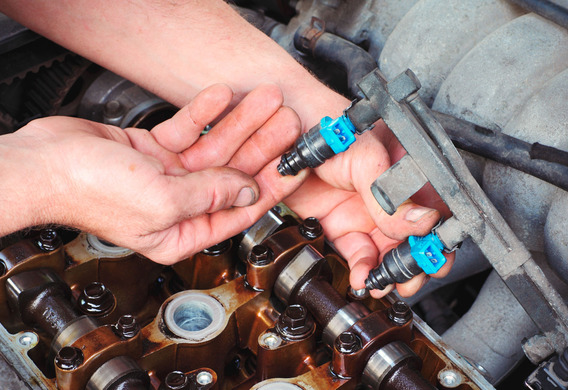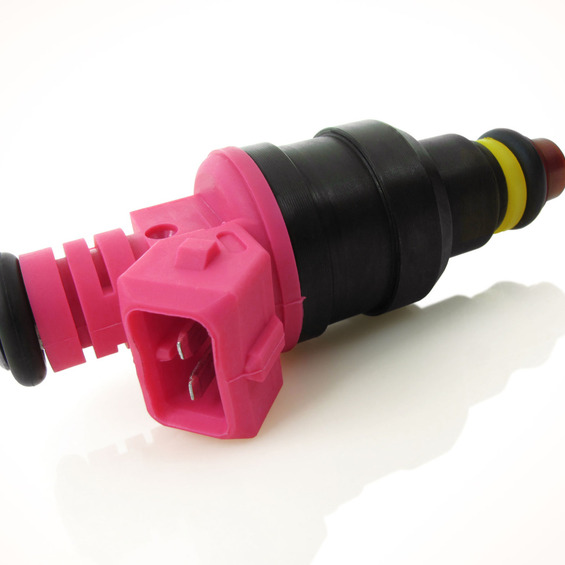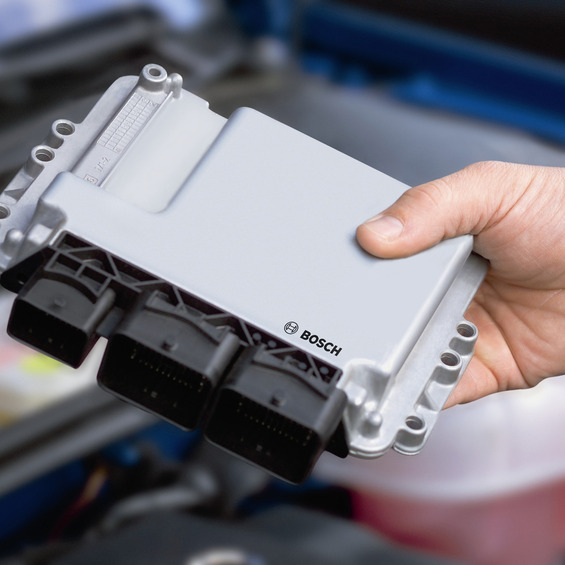
Injector engine is the main type of internal combustion engine used in modern cars.
By way of fuel mix, all petrol engines are divided into carburetating and injection engines. The carburettor for fuel delivery and the formation of the mix occurs in a mechanical device called carburettor, and in injection engines, the mixture is formed directly in the receiving manifold where the fuel is injected by means of electronically controlled nozzles.
Tale of the injection of the injector on petrol engines
The first mechanical injection system, a modern injection engine, was developed by BOSCH. The system was installed on the Mercedes Benz 300SL serial car in 1954. The changes in the fuel feed system were not radical-instead of the carburetor, a dosing mechanism with one nozzle that had electronic control was used. This will be later called "monopnewscopic". The dosage was more accurate, but not in each cylinder, but in a central place, as in a carburetor.
One of the first electro-distributed injection systems, Electrojector, was developed by the American company Bendix Corporation in 1957
After the invention of the distributed injection, the supply of fuel to each cylinder is made individually. In this injection system, the formation of the fuel mixture occurs in close proximity to the intake valves of each cylinder. The fuel is supplied to the nozzle pipes and is sprayed into the manifold. The work of each nozzle is regulated. This control of the dosage of fuel and injection into each cylinder was raised to a new level.
But the designers did not stop there and developed a system with direct injection of fuel. The first such serial motors for the first time demonstrated the concern of Mitsubishi in 1996. It leads to the border of the combustion chamber and the intake valve, and it is only in the cylinder itself that occurs with the jet fuel.
Injection device and operating principle
The engine's power depends on the volume of the air and petrol mixture as a unit of time entering the combustion chamber. The need to replace the carburetor to a better device has arisen because the mechanical device (in this case, in the carburetor) has not been able to respond quickly enough to the effect of changing the load on the engine.
In Japan, the Toyota company offered a distributed-vehicle distributed injection for a serial car. This was an option for the 1974 Celica model
In the injection system, the delivery of the fuel is carried out by injection into the intake manifold by means of injectors. The air-fuel delivery system is more difficult but more flexible and more operational.
The operation of the injection gas injection system consists of collecting information, processing it and sending an electronic signal to the actuator, in this case, at the injector.
The mechanical component of this system consists of a fuel pump, fuel line transfer valve (pressure regulator), engine idling support, and nozzles.
The truckers are mechanical and electric. An electromagnet or a piezoelement is used as the transmission.

Petrol is sprayed by a nozzle under pressure through a very small opening. On the one hand, it allows to achieve high dosage accuracy and great dust, on the other, the quality of fuel for injection engines is of great importance. The filling hole will not be able to spray the fuel well, which means that the optimal combustible mixture will not work.
NASCAR banned the use of carburettors on racing cars of the League of the same name only in 2012
An electron-managed nozzle executes computer commands and supplies the required amount of fuel to be changed according to the current load at exactly calculated times. In petrol-fuelled engines with distributed injection with injectors, they interact with candles playing the role of the actuating device. After receiving the electrical pulse, the nozzle under pressure shall enter the fuel into the cylinder or intake manifold, and shall overlap the supply after the opening of the candle.

The role of computer administration in the injection system
The most complex part of injection gas engines is the electronic control unit. It includes ROM-permanent storage, RAM-random access memory, and microprocessor. It processes electronic signals from sensors, analyts information, and compares the data stored in the computer memory. The integrated program takes into account the peculiarities of the various engine operating modes and the ambient conditions in which it has to operate. If discrepancies are found in the information, the computer issues commands to the executive mechanisms for correction.
The use of the distributed injection made it possible to have a system for disabling the engines of large volumes
Sensors that collect engine information are operating in conjunction with the ECU. They are located on different parts of the engine structure. Among the standard data collection devices are: mass flow sensor; throttle position sensor; detonation sensor; coolant temperature sensor; crankshaft position sensor and others. The 16-valve engine shall be fitted with a phase sensor.
The injection system process is as follows: the air flow sensor measures the engine intake mass and transmits the data to the computer. On the basis of this information and taking into account other current parameters-the temperature of the air and the engine itself, the speed of the crankshaft, the degree and the speed of the opening of the throttle, the computer calculates the optimal amount of fuel for the given volume of air and provides an electrical pulse of the required duration on the injectors. By accepting this impulse, they open and pressurized the fuel in the intake manifold.
Advantage and disadvantages of injection engines
The main advantage of injection gasoline engines is economy. It is 10 to 20 per cent compared to carburetor engines. In addition, if the injector is used, it is possible to obtain a higher power from the same engine capacity. Also, the indisputable advantage of such engines is the lower concentrations of harmful substances in the exhaust gases.
Less is considered to be that, in the event of a failure in the injection injection system, only trained personnel may be diagnosed and repaired. The complexity of such professional services is the main drawback of injection gasoline engines.







